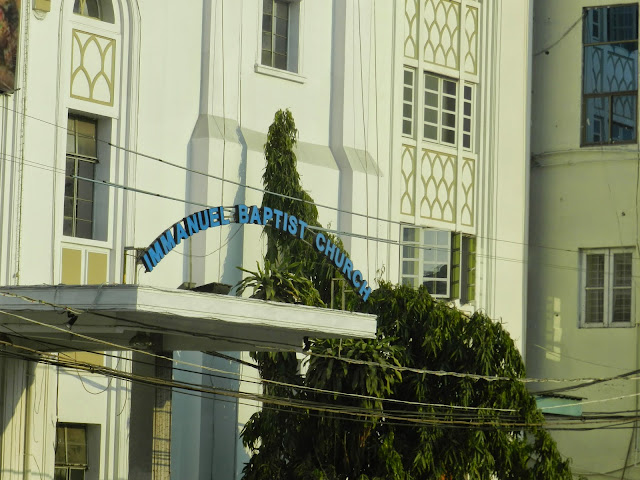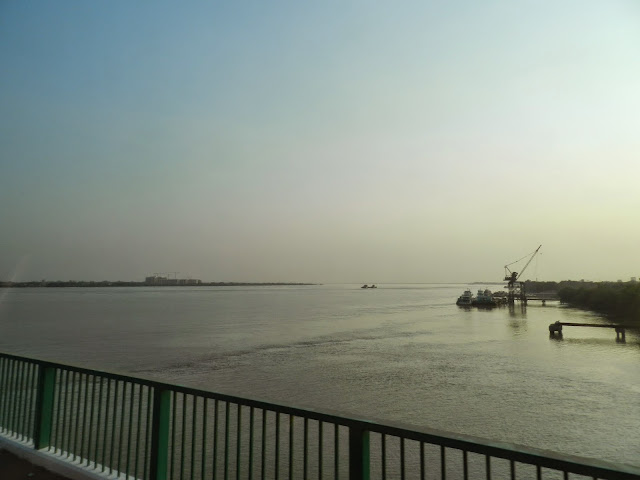Best of Yangon
Yangon lies on the wide Yangon River, about 20 miles from the Andaman Sea. Relax for a panoramic drive through downtown Yangon, where the British colonial influence still remains in force. The Sule Pagoda, which marks the center of the city, is a logical starting point and from there you will continue through streets lined with splendidly kept colonial buildings and ancient pagodas. You’ll head to a monastery that is home to more than 1,000 monks. In his lifetime, every Myanmar male is expected to spend some time serving as a monk to learn the ways of Buddhism. Each morning, thousands of monks roam the streets collecting alms for their meals. In accordance with Buddhist beliefs, monks eat only twice a day—early in the morning and mid-morning. Watch the lunchtime procession at the monastery; then continue to see the Chauk That Gyi Reclining Buddha. This colossal (223-foot-long) reclining Buddha statue is one of the largest in Myanmar. Lunch will be served at a local hotel, before you head to the National Museum to gain an insight into the history of Myanmar. Here you will find several interesting exhibits, including the 26-foot-tall Lion Throne used by the last Burmese King. The next must-see is Bogyoke Aung San Market (Scott Market). This sprawling market dates back 70 years and features more than 2,000 stalls. It boasts the largest selection of Myanmar handicrafts in one place—feel free to authenticate your experience by haggling alongside local shoppers for a variety of interesting souvenirs from lacquerware and puppets to woodcarvings, clothing and fabrics. This afternoon, you’ll visit the Shwedagon Pagoda. One of the wonders of the religious world, this spectacle is believed to be the earliest pagoda of Gautama Buddha Era, built by King Okkalapa more than 2,500 years ago. Located on the top of Singuttara Hill, and visible from all over town, the gleaming golden stupa (spire) soars 326 feet tall and is topped with more than 6,500 diamonds, rubies and other precious stones. For the people of Myanmar it is the most sacred of all Buddhist sites and is the destination of many a pilgrimage. In the tradition of Buddhist faith, you’ll walk around the pagoda clockwise and, if you know which day of the week on which you were born, you can pray, light a candle, place some flowers, or pour water over the shrine corresponding to that day. Transfer back to the ship at the conclusion of your tour.


































































CHAUK HTAT GYI RECLINING BUDDHA TEMPLE
 |
| Add caption |
 |
| CHAUK HTAT GYI RECLINING BUDDHA |
 |
| CHAUK HTAT GYI RECLINING BUDDHA |
 |
| CHAUK HTAT GYI RECLINING BUDDHA |
 |
| LUNCH AT THE SULE SHANGRI-LA HOTEL |
 |
| SULE SHANGRI-LA HOTEL |
 |
| SULE SHANGRI-LA HOTEL |
 |
| LUNCH AT THE SULE SHANGRI-LA HOTEL |
 |
| SULE SHANGRI-LA HOTEL |
SULE SHANGRI-LA HOTEL
 |
BOGYOKE AUNG SAN MARKET (SCOTT MARKET)
2000 STALLS |
 |
BOGYOKE AUNG SAN MARKET (SCOTT MARKET)
2000 STALLS |
 |
BOGYOKE AUNG SAN MARKET (SCOTT MARKET)
2000 STALLS |
 |
| MOCUS THE DINING ROOM ATTENDANT |
 |
| APPLE STORE IN YANGOON |



































































































%2BMyanmar%2B(Burma).JPG)
%2BMyanmar%2B(Burma).JPG)
%2BMyanmar%2B(Burma).JPG)
%2BMyanmar%2B(Burma).JPG)
%2BMyanmar%2B(Burma).JPG)
%2BMyanmar%2B(Burma).JPG)

































































































No comments:
Post a Comment